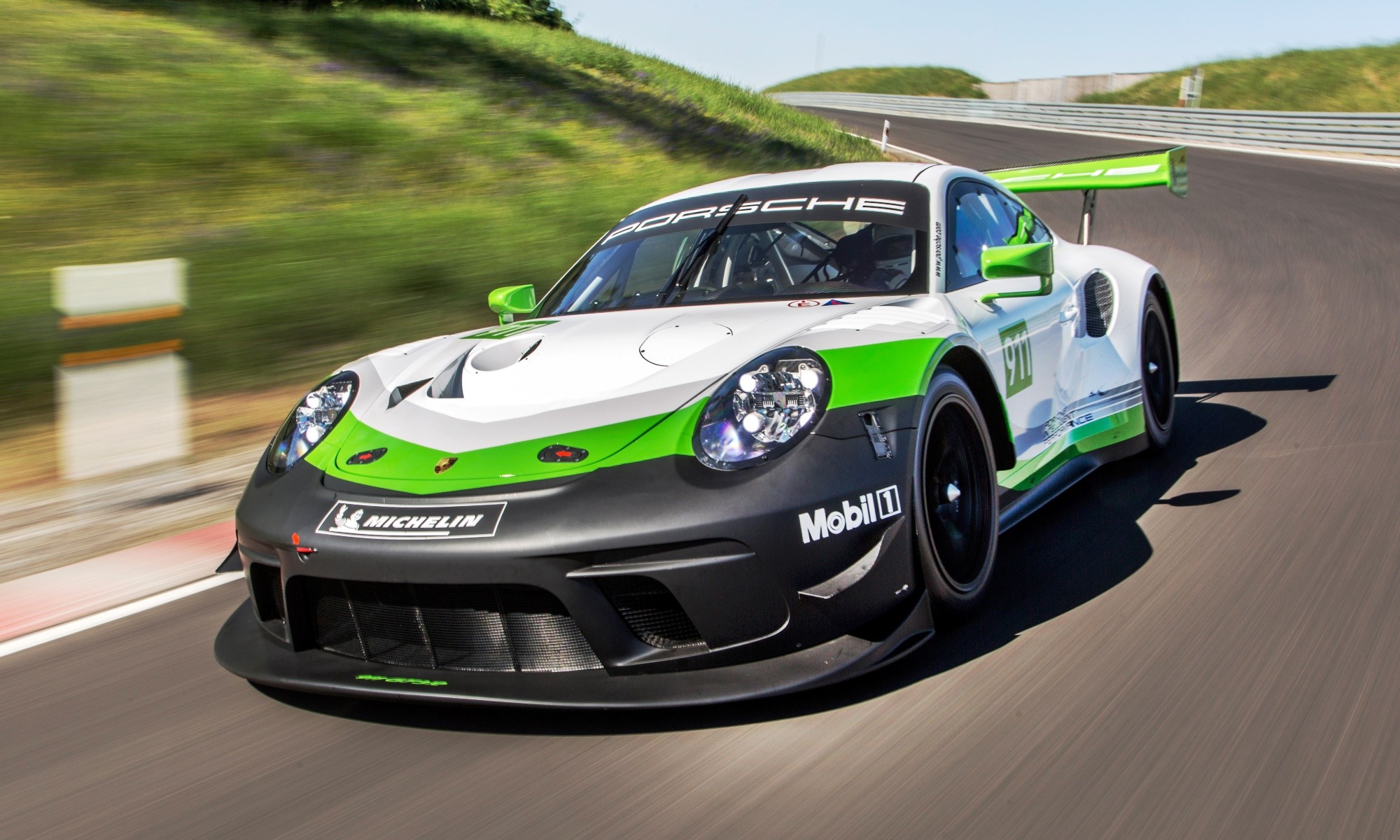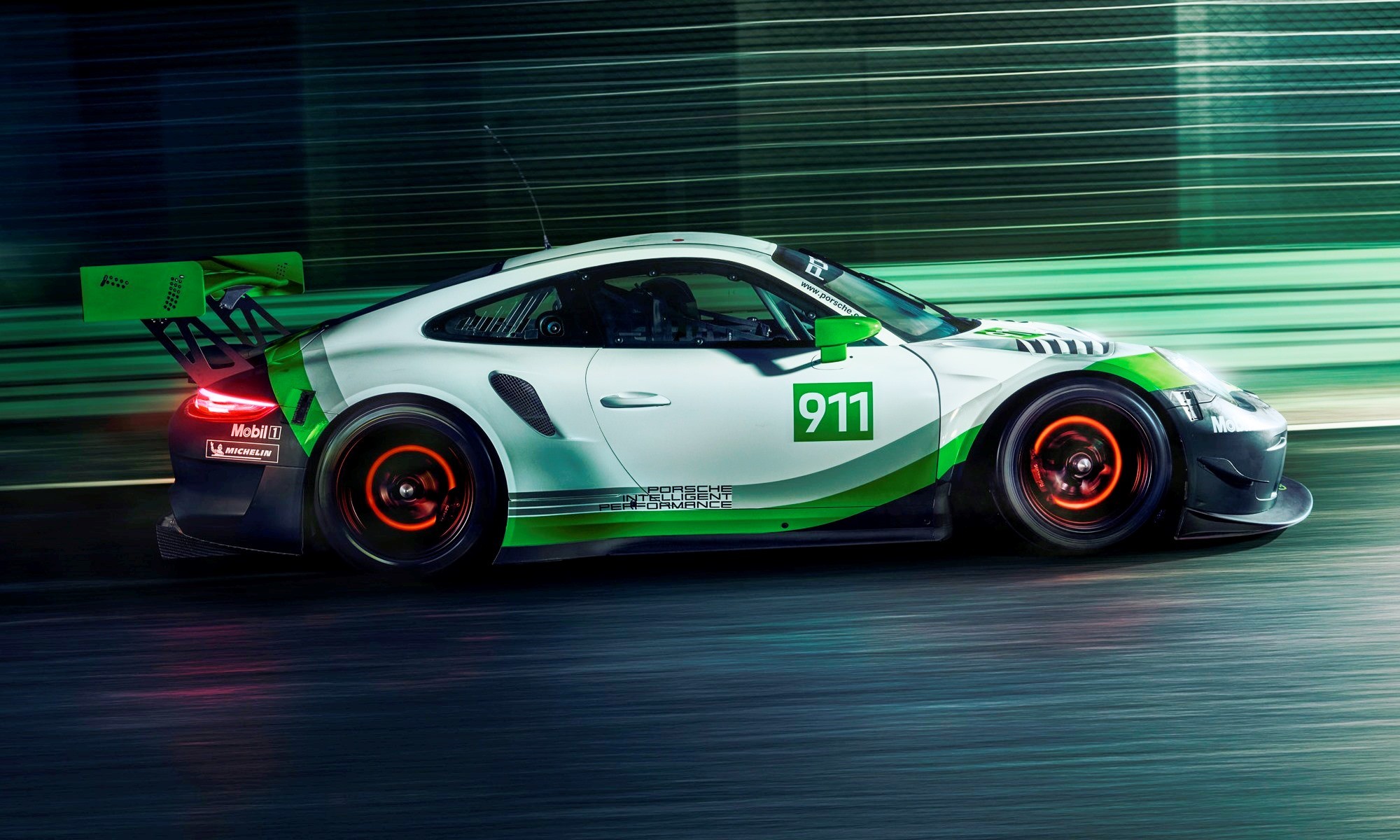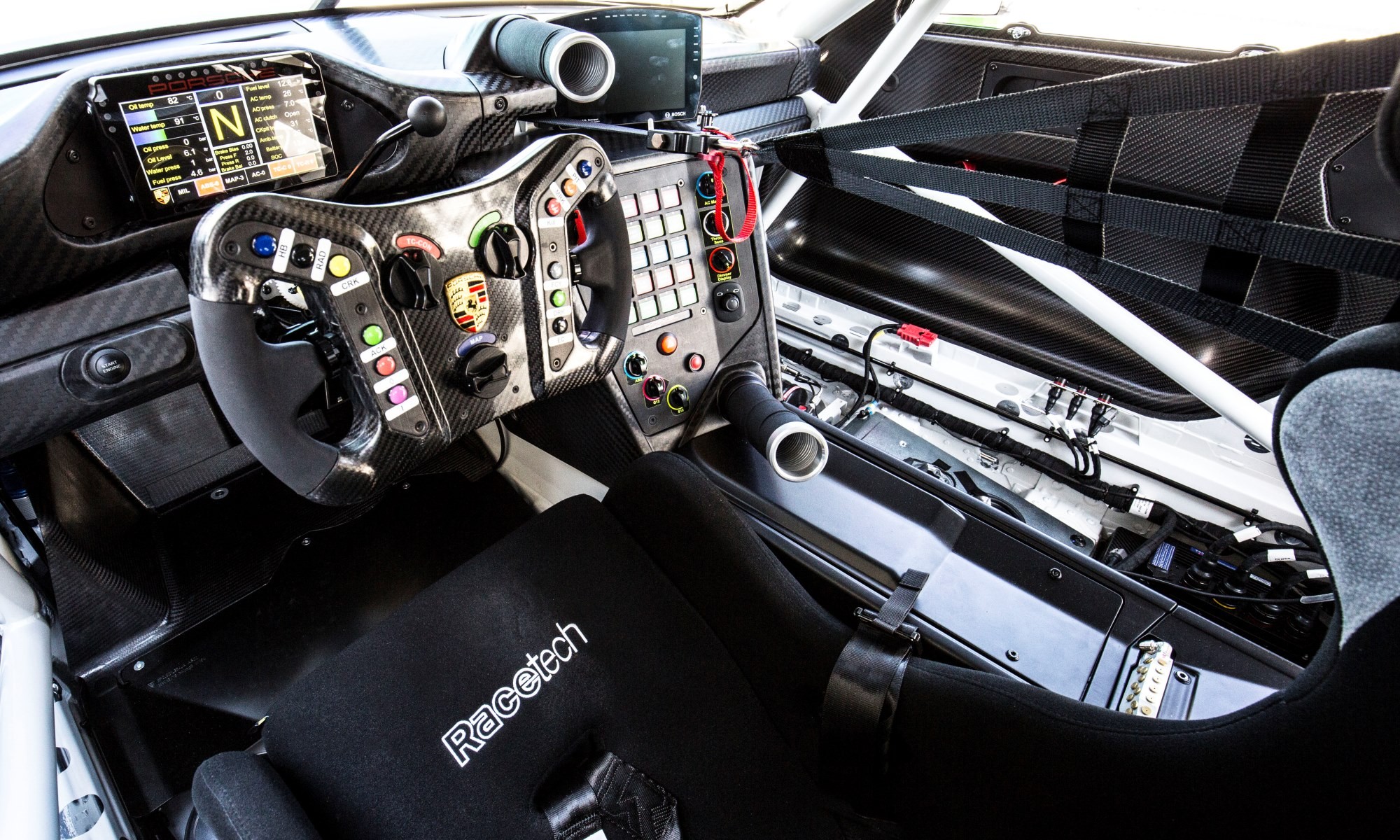Porsche is well-known as a maker of performance and sportscars. But an important part of the company’s business is producing racing cars in its bespoke division situated at Porsche Motorsport Centre in Flacht. More information about this interesting place at this link.
Porsche produces GT3 Cup cars for its own exciting one-make series and GT3 cars for customers to buy and race, and until recently it also built LMP1 cars that competed so successfully in the World Endurance Championship.
Click this link to get a better understanding of the Porsche Motorsport pyramid.
A new challenger
A few days ago Porsche launched a new 911 GT3 R. The latest racer is based on the 911 GT3 RS production sportscar, of course, the racer does away with many of the compromises made for road use.
Be sure to read our drive review of a GT3 RS by clicking here.
During development of the GT3 R, engineers paid special attention to efficient aerodynamics, safety as well as lowering the cost of servicing and spare parts.
Under the bonnet
Powering the new 911 GT3 R is a flat-six engine that is closely related to the engine of its road car sibling. Direct fuel injection, variable phasing of both camshafts, a motorsport management system and dry sump lubrication all help the four-litre motor to develop up to 404 kW, depending on the series entered.
That power is transferred to the rear wheels via a Porsche sequential six-speed gearbox. Gear changes are carried out by an electronic actuator that is signaled by shift paddles on the steering wheel exactly the same as in the road car.
Revised suspension and brakes
In a departure from the road car’s underpinnings, the GT3 R employs double wishbone suspension for the front wheels. The road-going model uses MacPherson struts for the front wheels and a multi-link arrangement at the rear.
To deal with the rigours of racing, the braking system has been upgraded accordingly. Six-piston aluminium monobloc calipers clamp 390 mm ventilated and grooved steel brake discs inside the front wheels. 370 mm rotors and four-piston calipers do duty on the rear axle. Independent front and rear hydraulic circuits allow pilots to set the brake bias as desired.
Lightweight and aero grip
The aluminium-steel monocoque structure of the 911 GT3 RS production model forms the base for the racecar. Most of the outer skin, including the roof, bonnet, wheel arches, fenders, doors, side and tail sections, as well as the engine cover and interior trim, are made of carbon-fibre composite material (CFRP).
Wheel arch air-vents on the front fenders increase downforce on the front axle, which is balanced by that massive, adjustable rear wing.
Price
If you are reading this thinking to yourself “I wonder how much that costs as I’d really like to own one?” then congrats, you must be in a very fortunate position.
The Porsche 911 GT3 R can be ordered immediately for the princely sum of 459 000 Euro. Of course, that excludes any taxes or duties that may apply to your home country. No word on whether it comes with a free tank of race fuel.






![Hyundai Brings Full ICE Experience to Ioniq 5N EV [video]](https://doubleapex.co.za/wp-content/uploads/2024/04/Hyundai-Ioniq-5-N-1-1-500x383.jpg)


Leave A Comment